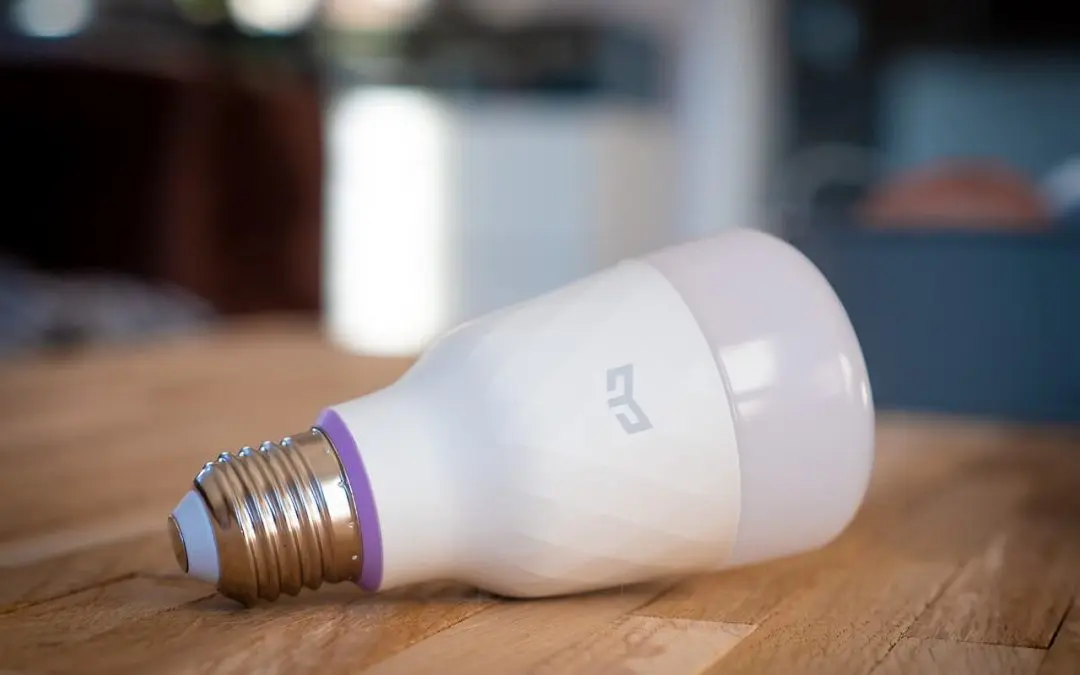Lighting affects the ambiance and functionality of any space. Adequate illumination is not just about seeing clearly; it’s about creating a comfortable environment that enhances your mood and well-being. Good lighting is essential, whether in the kitchen where you prepare meals, the home office, or your sleeping areas. Here are five effective tips to improve indoor lighting.
How to Improve Indoor Lighting
Maximize Natural Light
Natural light is mood-lifting, health-promoting, and, best of all, free! Brighten your home with sunlight to enjoy better productivity and mental health. The more natural light in your space, the less you’ll rely on artificial lighting during the daytime.
- Keep windows and skylights clean and unobstructed by furniture or heavy drapes.
- Choose light-colored and lightweight curtains or blinds so you can open them to allow sunlight in.
Choose the Right Bulbs to Improve Indoor Lighting
Many types of light bulbs are on the market, and for some homeowners, this feels overwhelming. Choosing the best bulb for the job is essential to boost lighting indoors. Understanding your space and the mood you wish to create will guide you in selecting the perfect bulb.
- Learn about the available bulbs – from energy-saving LEDs to warm incandescents.
- Pay attention to color temperature, measured in Kelvins. Bulbs with a higher Kelvin count emit a cooler, bluer light, while lower counts yield a warmer, golden hue.
Strategic Placement of Lights
The location of lighting fixtures affects the mood of a space and can transform a room. For the best results, adopt a layered approach to your home’s lighting.
- Use a mix of ambient, task, and accent lighting fixtures to cater to different needs and times of the day.
- Install directional lighting in task areas like over kitchen counters or in the reading nook.
- Highlight focal points like artwork and architectural features with accent lighting.
Use Mirrors and Reflective Surfaces
Mirrors aren’t just for vanity – they amplify your lighting significantly. Use mirrors in poorly lit rooms to boost illumination and help the space feel larger.
- Position mirrors across from windows to reflect natural light during the day.
- Reflect artificial light effectively by choosing furniture and decor with glass or glossy finishes.
Improve Indoor Lighting by Optimizing Control
Having control over your lighting enhances functionality and boosts the atmosphere of your home.
- Dimmer switches allow you to adjust the brightness of the lights to suit the time of day or your mood.
- Timers and smart lighting systems give you the power to program lighting settings, making your home more energy-efficient and secure.
- Smart lighting options feature seemingly endless color options to manage the ambiance of any space.
Improving your home’s lighting will change the look and feel of your living spaces. Brighten each room in your home haven with these practical indoor lighting tips.
FAQs
Are there design techniques or color schemes that help maximize the perception of light and space in a room?
Yes. Light-colored paint on walls and ceilings reflects more light, making a space feel brighter and more open. Additionally, incorporating mirrors to reflect light and create the illusion of depth can enhance the sense of spaciousness.
Are there DIY methods or projects to improve indoor lighting without needing professional installation?
Absolutely. Some examples include installing adhesive LED strip lights under cabinets, swapping outdated light fixtures for more modern and efficient options, adding plug-in wall sconces to dark corners, and using battery-operated motion-sensor lights in closets, pantries, or staircases for convenience and safety.
How can I effectively balance the need for energy-efficient lighting with the need for brightness and ambiance indoors?
Select energy-efficient light bulbs, such as LED or CFL bulbs, which consume less energy while providing good illumination. Use dimmer switches to adjust the brightness levels, saving energy when full brightness is not required.
Are there health benefits associated with improved indoor illumination beyond enhancing visibility?
Yes. Adequate lighting helps regulate circadian rhythms, promoting better sleep patterns and overall well-being. Natural light exposure has been linked to mood improvement and increased productivity, while poor lighting conditions can cause eyestrain, headaches, and fatigue. Also, proper lighting enhances, reducing the risk of accidents and falls, especially in staircases, hallways, and bathrooms.
What are common mistakes when improving indoor illumination, and how can I overcome them?
Some pitfalls to avoid include overlooking the importance of layering ambient, task, and accent lighting, neglecting to consider the color temperature of light bulbs and how it affects the ambiance of a room, and failing to properly position lighting fixtures to avoid glare, shadows, or uneven illumination. Plan your lighting design carefully, considering the function and atmosphere of each space to choose appropriate light fixtures and bulbs.
Brand Name Home Inspections offers professional inspection services to homeowners and homebuyers in Northern California. Contact us to schedule an appointment.

